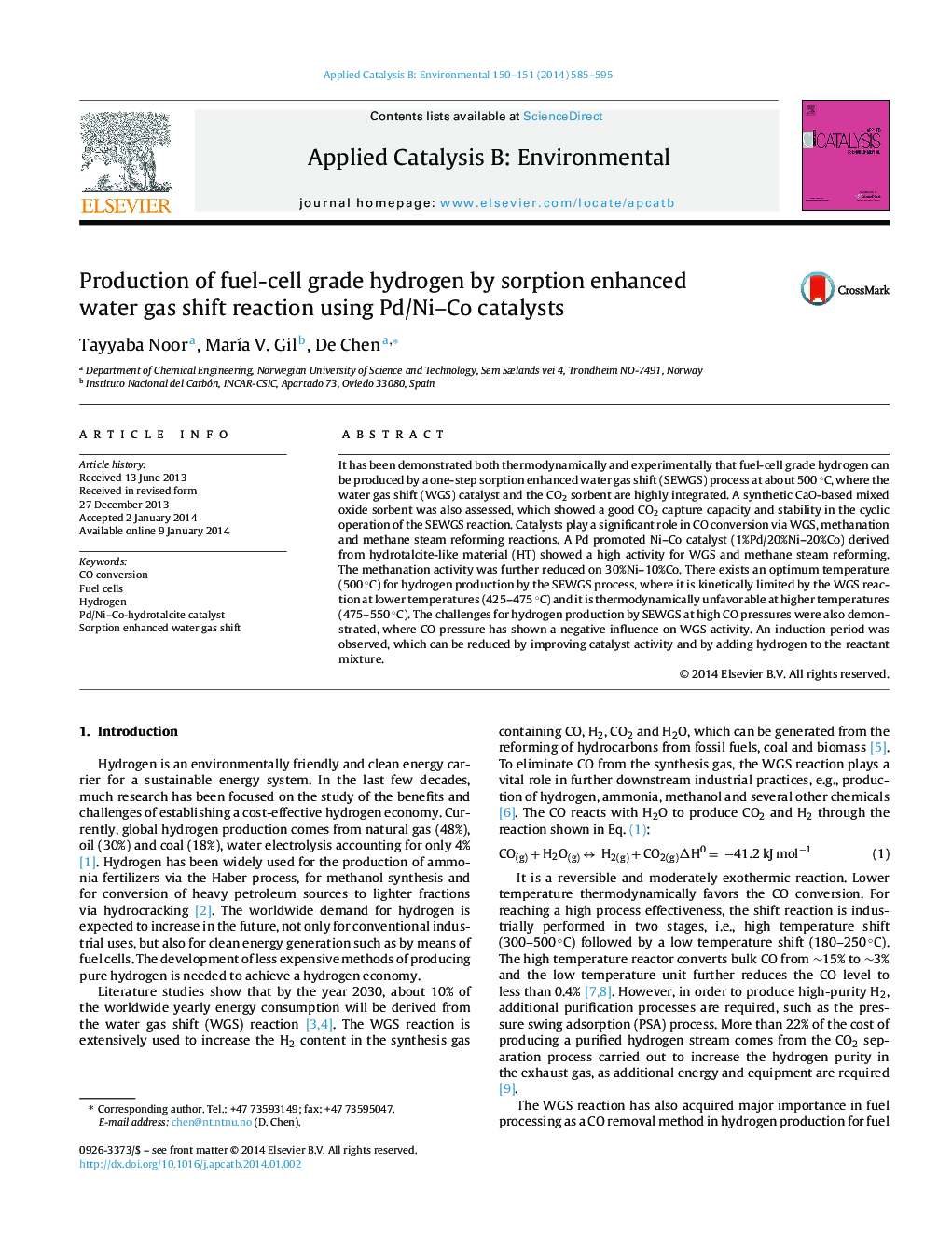| کد مقاله | کد نشریه | سال انتشار | مقاله انگلیسی | نسخه تمام متن |
|---|---|---|---|---|
| 45966 | 46427 | 2014 | 11 صفحه PDF | دانلود رایگان |

• Pd/Ni–Co catalyst and CaO based sorbent have been studied for sorption enhanced water gas shift reaction.
• Fuel cell grade hydrogen was achieved in one-step water gas shift reaction with in-situ CO2 capture.
• Improved resistance to methanation reaction was found by using 30%Ni–10%Co catalyst.
• CaCeZr mix oxide sorbent was evaluated for enhanced capture capacity and better stability than dolomite.
It has been demonstrated both thermodynamically and experimentally that fuel-cell grade hydrogen can be produced by a one-step sorption enhanced water gas shift (SEWGS) process at about 500 °C, where the water gas shift (WGS) catalyst and the CO2 sorbent are highly integrated. A synthetic CaO-based mixed oxide sorbent was also assessed, which showed a good CO2 capture capacity and stability in the cyclic operation of the SEWGS reaction. Catalysts play a significant role in CO conversion via WGS, methanation and methane steam reforming reactions. A Pd promoted Ni–Co catalyst (1%Pd/20%Ni–20%Co) derived from hydrotalcite-like material (HT) showed a high activity for WGS and methane steam reforming. The methanation activity was further reduced on 30%Ni–10%Co. There exists an optimum temperature (500 °C) for hydrogen production by the SEWGS process, where it is kinetically limited by the WGS reaction at lower temperatures (425–475 °C) and it is thermodynamically unfavorable at higher temperatures (475–550 °C). The challenges for hydrogen production by SEWGS at high CO pressures were also demonstrated, where CO pressure has shown a negative influence on WGS activity. An induction period was observed, which can be reduced by improving catalyst activity and by adding hydrogen to the reactant mixture.
Figure optionsDownload as PowerPoint slide
Journal: Applied Catalysis B: Environmental - Volumes 150–151, 5 May 2014, Pages 585–595